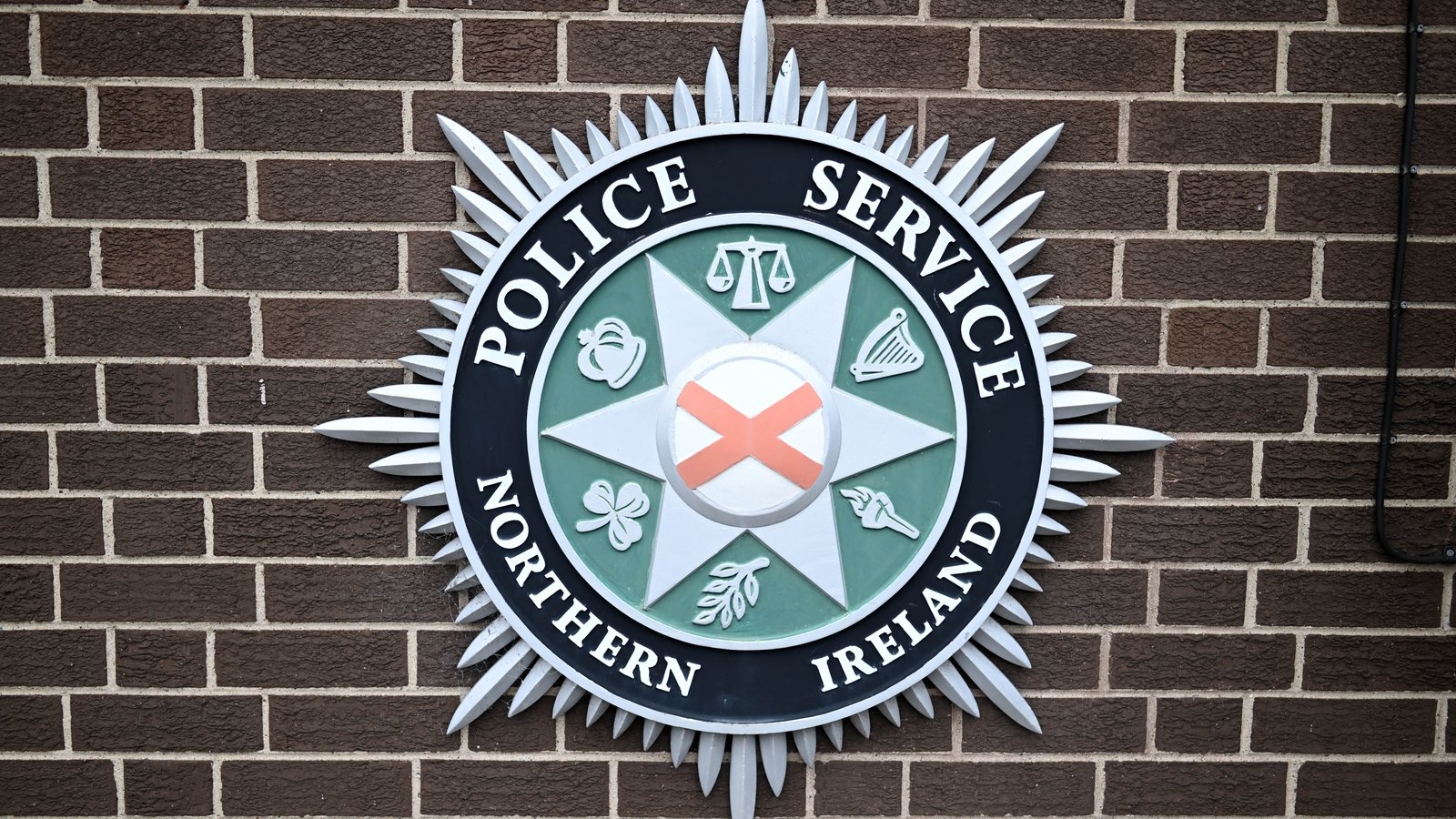Columbine and a quarter-century of US school shootings
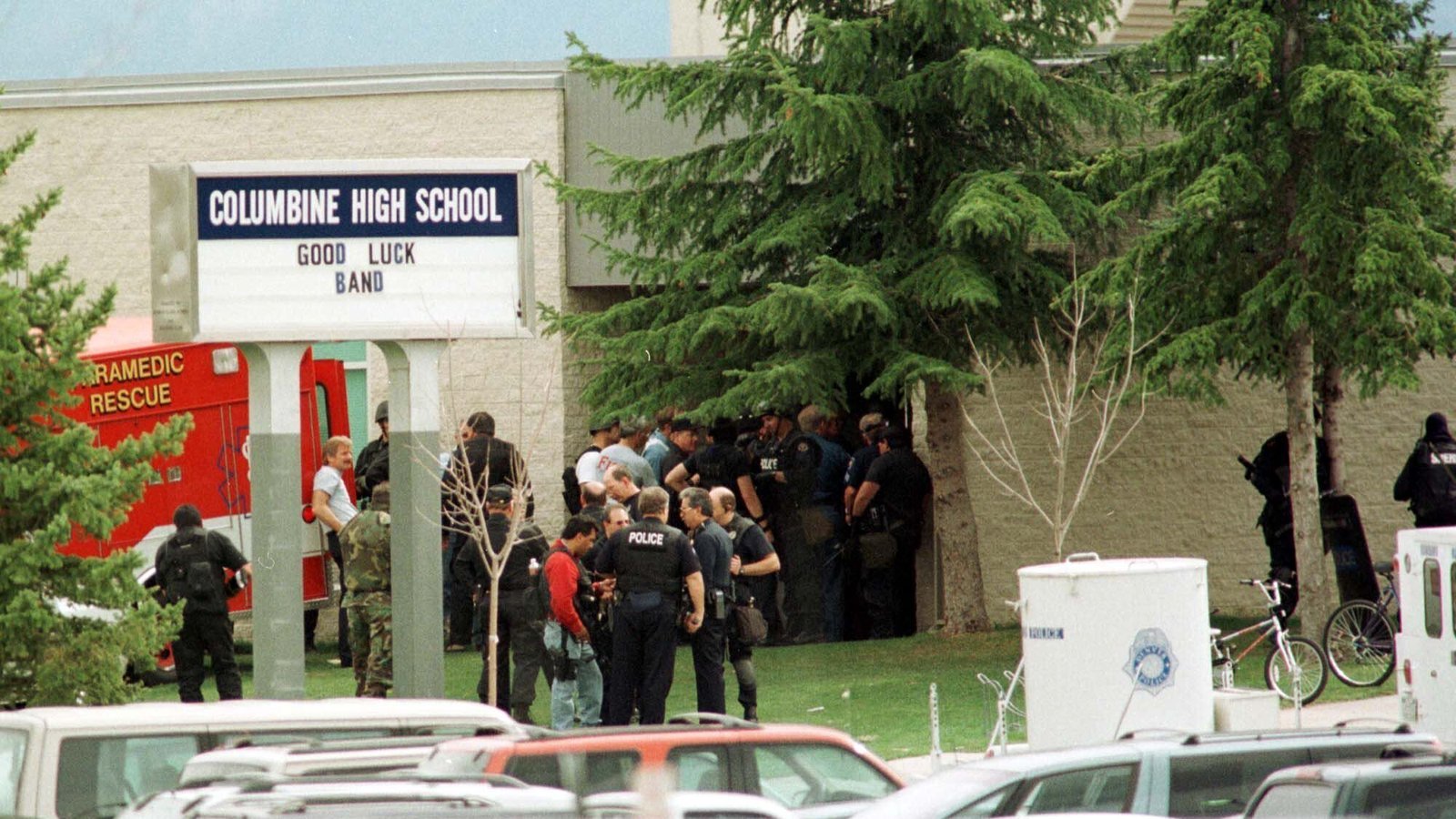
Today was the day Sebastian Villasenor was going to commemorate the 25th anniversary of the Columbine High School massacre – by massacring students at his own high school.
At least that is how the police who arrested the 18-year-old in February tell it.
When they raided his home in Eastvale – not far from Los Angeles, California – they found he had access to seven rifles, two revolvers, a shotgun and more than 1,000 rounds of ammunition.
They kicked his door in on the word of a fellow pupil at Ontario Christian High School, who reported Villasenor to the police because he “had been showing signs of being fixated on school shootings and had access to weapons”.
He will be arraigned in court next week.
Villasenor was planning to kill five schoolmates – four girls and one boy. The plot was so specific, according to the police, that one of them was facing “an immediate prospect of execution”, said Police Chief Michael Lorenz.
“What we discovered through the course of our investigation revealed that Villasenor had every intention of carrying out a school shooting at the Ontario Christian High School,” he said. “We learned Villasenor was obsessed with school shootings and police response times.”
Villasenor has plenty of research material available to him. In the quarter century since the shocking events at Columbine High School in Colorado, there have been hundreds of school shootings, hundreds of articles and videos about police response times and tactics, and endless discussion about guns in the US.
Of particular note has been evidence that the frequency of school shootings has increased during the past 25 years, with a marked increase in frequency in the last five years.
Two eras of school shootings
Since 2020, gunshot injuries have been the number one cause of paediatric deaths in the United States.
The anniversary of the Columbine shooting is 20 April, an event so shocking – at the time – that there are the pre-Columbine and post-Columbine eras in school shootings.
On this day in 1999, two pupils of the school – 17-year-old Dylan Klebold and 18-year-old Eric Harris – attacked their school and everyone in it, killing 12 fellow students and one teacher.
A further 24 were injured in the attack, all but three by gunfire. Klebold and Harris killed themselves when the police, slowly and belatedly, arrived and tentatively engaged them.
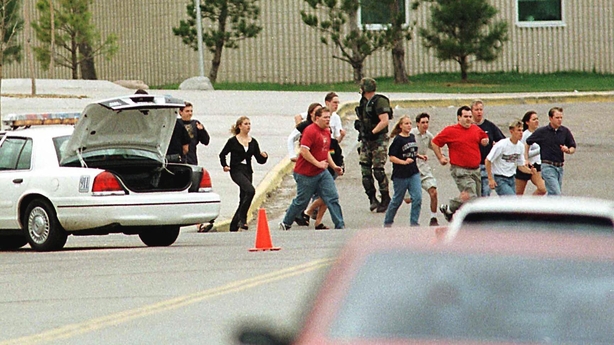
It took 47 minutes before FBI officers engaged the pair.
A number of homemade bombs that had failed to explode were found scattered around the school, indicating the killers may have intended to inflict mass casualties by homemade explosives, rather than guns. No motive was discovered or proven.
Pre-Columbine school shootings happened – even as far back as the 19th century – but they were rare, and usually had few casualties.
Post-Columbine, the shootings grew in scale and frequency. Bloodbaths were not uncommon – Sandy Hook, Parkland, Uvalde – small places, big death tolls. No reason. None whatsoever.
Criminal justice researchers at Tarelton State University in Texas have studied 20 years of data on school shootings – more than 300 since the Columbine massacre.
Headline findings: 96% of school shooters were male; 65% of the shootings were on high school campuses; 64% of the shooters were aged between 14 and 18, and therefore were too young to legally buy guns; 60% of shooters were former pupils.
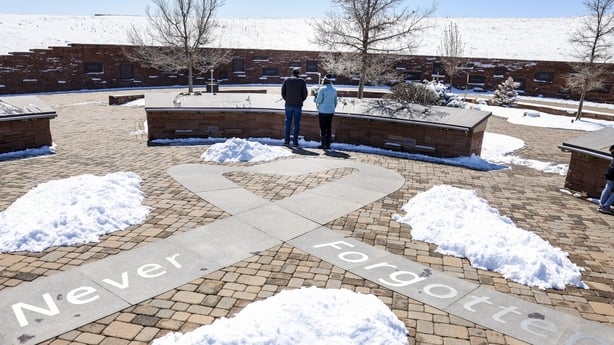
The death tolls increased hugely when shooters moved inside the school buildings and 2021 saw the biggest number of school shootings – at 41.
Between 1999 and 2017, the highest annual amount was 15.
And every time, promises of “never again”. Every time. Time after time. Never again.
Other overused phrases in the 25 years of reportage since Columbine include “legally held or obtained firearm”, “mental health” and “second amendment”.
“Active shooter” is definitely a post-Columbine phrase, one that only entered the lexicon this century.
By now it is as much a part of quotidian American vocabulary as “restroom” and “gas prices”.
These days, everyone knows what those two words signify because they are used so often.
Criticism of police response
The lacklustre police response to Columbine was heavily criticised and led to the development of Immediate Action Rapid Deployment (IARD) tactics – essentially run to the sound of the gunfire and immediately engage the active shooter. And by engage, they mean shoot.
“It changed everything,” James Gagliano, a retired member of the FBI’s elite hostage rescue team told CNN.
“Prior to Columbine, nobody understood what the term ‘active shooter’ meant.”
According to FBI research published a decade ago, more than half of mass shooting incidents are still in progress when officers arrive on the scene, with 75% requiring law enforcement to confront the shooter before the threat ends.
Speed or response is now considered the most important factor, particularly in school shooting incidents where children are the target for the shooter.
The response of Nashville police last year to a shooting spree by Audrey Hale at her old school, in which three staff and three nine-year-old children were murdered, was exemplary.
The whole incident was captured on police bodycam video. The officers arrived, ran into the building and ran to the sound of gunfire – putting themselves in considerable danger – to confront and “neutralise”, or kill, the shooter.
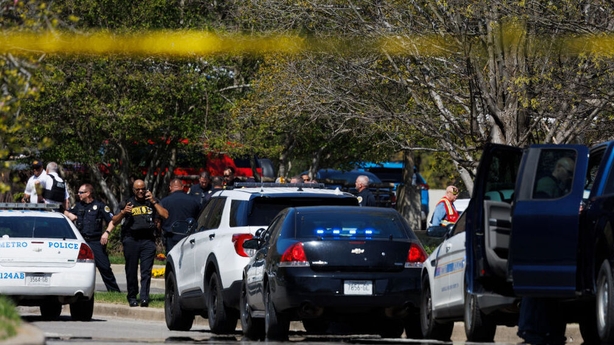
It was all over less than two minutes after the police cars pulled up at the entrance to the school.
The exact opposite happened at Robb Elementary School in Uvalde, Texas, the year before.
Then 96 heavily armed police from multiple law enforcement agencies stood outside a classroom for almost an hour, while inside, Salvador Ramos butchered 19 children and two teachers with his AR-15 assault rifle.
Another 19, mostly children, were wounded.
“Cowards” is how many in Uvalde describe the cops.
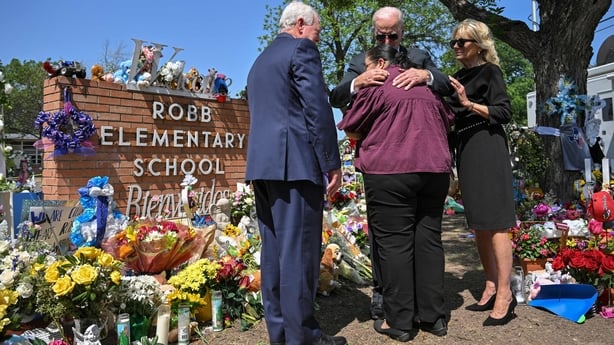
Most police forces in the US train officers in IARD and have frequent drills.
They coordinate with local schools, which also run frequent active shooter drills – like fire drills, except the threat is not from a fire.
Children barely big enough to carry a satchel undergo training in what to do if someone tries to kill them at school.
A new form of security consultancy has grown up, with retired law enforcement officers or ex-military types professionally advising schools on security and running active shooter drills. Some even offer tactical firearms training to teachers.
Let me say that again. They are teaching teachers how to effectively use the 9mm pistol some of them carry to work in their schoolbag to engage an active shooter, running them through the equivalent of the Army Ranger Wing’s ‘Kill House’ in the Curragh Camp in Co Kildare.
And then it is back to the three R’s and planning a class outing to a museum.
Incentives for gun-carrying teachers
In Utah, a bill is going through the state’s House of Representatives to provide a budget for annual firearms training for teachers with concealed-carry firearms licenses to “incentivise” them to bring their guns to school.
The bill would also waive the fees for carry permits for teachers and shield them and their school district employers from civil liability if they are involved in a shooting incident at work. Again, more incentives to get teachers to join the “educator-protector” programme.
Teacher Brian Peterson of Lake Ridge Elementary School in Magna, Utah, is a supporter of the bill.
“We have a lot of teachers who do carry, and the training is invaluable,” the sixth grade teacher said.
“Knowing how to defend your classroom, whether it’s with a weapon or improvised weapon, is what teachers need.”
Jason Crow, a Democratic Party member of the House of Representatives for Colorado, campaigns for better gun laws as a way of protecting schoolchildren.
His district takes in Columbine High School. As a former US Army Ranger who saw active service in Iraq and Afghanistan, he knows a thing or two about guns.
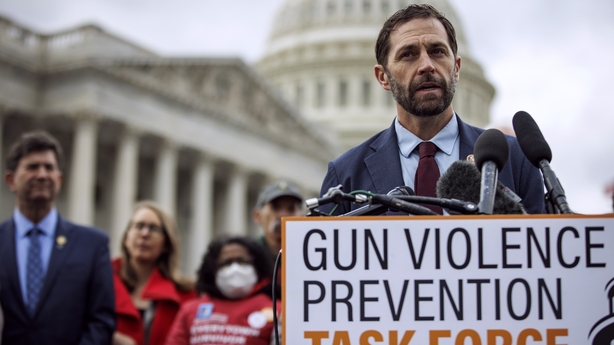
In an article this week for the Sentinel newspaper in Colorado, he wrote of the schoolchildren who “get up every day and walk into their schools with legitimate fears about their safety.
“They endure one active shooter drill after the next. Why does our society accept this? Seven-year-olds and seventeen-year-olds share the same fear, and it is our responsibility as parents to protect them and do everything we can to alleviate these fears.”
Mr Crow is calling for universal background checks on gun buyers, red flag laws that allow police to seize weapons from people who may be showing signs of behaviours associated with mass shooters, and an assault weapons ban – to make it harder to get the kind of guns that cause the most damage.
“25 years of inaction is completely unacceptable,” he wrote of the legislative state of play since Columbine.
“We cannot allow another 25 to pass before we say ‘never again’ and finally mean it.”
He is not the only representative or senator trying really hard to bring about legislative change, but it only takes a handful of opponents to stop bills dead in their tracks.
And even settled legislation can fail to be renewed.
That is what happened to the ban on assault weapons that was passed into law in 1994. There had been a number of high-profile mass shootings, including a 1989 attack on a school in California in which a man shot 34 children with an AK-47, killing five of them.
Former US presidents Gerald Ford, Jimmy Carter and Ronald Reagan supported the ban, reflecting widespread support.
But the law had a sunset clause – it would lapse after ten years unless renewed by Congress.
In 2004, just five years after Columbine, Congress declined to renew the legislation and the ban was allowed to lapse.
The consequence was a proliferation of assault rifles, particularly the AR-15 type weapon that seems to feature in many mass shooting incidents.
Philip Cook, a former professor of public policy at Duke University in North Carolina, points the finger at this and other legislative failures after Columbine.
“One thing that has changed is the availability of AR-15 type rifles with large capacity magazines. The vast increase in the availability of such weapons was facilitated by the sunset clause in the federal ban on assault weapons in 2004, followed by the congressional act that immunised the firearms industry from lawsuits in 2005, and the Supreme Court’s Heller decision in 2008, which overturned a 1975 ban on handgun ownership here in the District of Columbia.
“The surge in the sales of such weapons parallels their increasing use in mass shootings,” said Mr Cook.
Gun sales
It is hard to believe it now, but the rise of the AR-15 has been a 21st century phenomenon.
The first consumer model went on the market in 1960, but most gun owners disdained the lightweight, small calibre military-style weapon from ArmaLite.
Annual sales were in the low tens of thousands – and stayed that way until after 9/11 – when resisting terrorists became a thing in the US, and that sunset clause in the assault rifle ban legislation that kicked in in 2004.
Private equity saw the 40% gross margin on the weapon and wanted more of it.
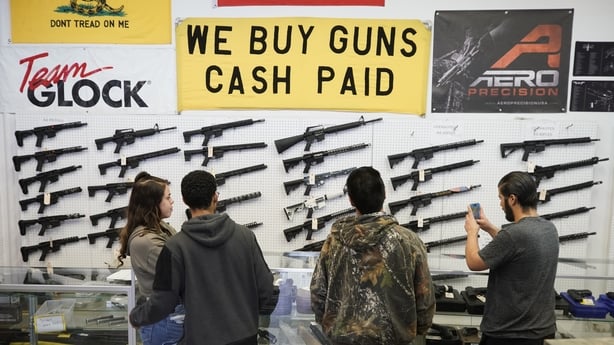
A marketing campaign began, and an icon in the US’s culture wars emerged. Sales ramped up swiftly, breaking the half a million units a year when Barack Obama got elected.
The paradox of the Sandy Hook massacre of 2012 was that it led to a huge surge in gun sales, as enthusiasts worried about a ban being re-imposed, and rushed to buy.
That pattern has held ever since – every time there is a big massacre, especially in a school – there is a spike in gun sales.
In 2016, when Hillary Clinton was running for president, AR-15 sales hit 2.2 million – the highest sales on record. Much of them were driven by a fear of a total ban on the weapon.
In 2020, the first year of Covid, AR-15 sales also broke the two million mark.
There are now more than 20 million AR-15s owned by civilians in the United States.
A top quality new model costs around $2,000, but I saw a lower quality second-hand version in a large sporting goods store in Iowa for $340.
The same store would sell me 150 rounds of 5.56mm ammo for $99.99 – enough to fill five high-capacity magazines.
A bit of tactical gear to hold the spare mags, and for about $500 I could have tooled up like Rambo.
Which is exactly what many 18-year-olds are able to do – lawfully – in most states.
18-year-olds are not allowed to own handguns. You have to be 21 for that, the same for buying alcohol or lottery tickets. But semi-automatic assault rifles are fine for 18-year-olds.
And if the only adult vice they can indulge in is buying an assault rifle when they turn 18, it is hardly surprising that many of them do so.
The Crumbley case
More surprising are the parents who buy firearms for their children, like Jennifer and James Crumbley.
They bought their emotionally troubled 15-year-old son Ethan a Sig Sauer 9mm pistol.
He went on to kill four of his classmates with it.
They had been warned by the school that Ethan was displaying signs of violent thoughts and mental distress.
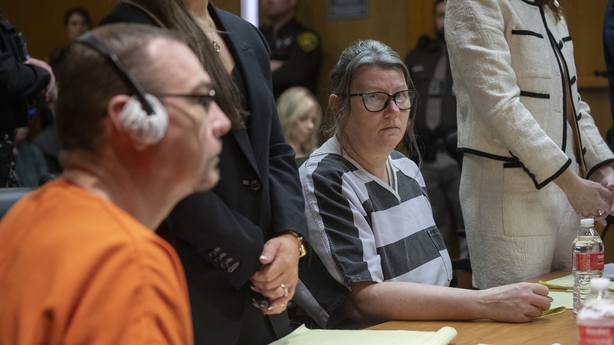
Jennifer Crumbley took her son to a firing range where they shot 50 rounds and took 50 more home just days before the school killings. In Iowa, a box of 100 9mm rounds could be had for $29.99.
She posted on social media that the gun was an early Christmas present.
Last month a court in Michigan sentenced the Crumbleys to 15 years in prison for involuntary manslaughter – the first time the parents of a teenage shooter have been held criminally liable for the actions of their child, a child who is now serving a life sentence for four murders.
But while there is now a legal precedent to hold parents responsible for the crimes of their offspring, the companies that make firearms cannot be sued for the damage they do, most un-American notion, where most manufacturers expect to be sued over their products.
But other legal changes are afoot. Last week the Biden administration moved to close the so-called ‘gun show’ loophole, one of the biggest weaknesses in legislation governing firearms sales.
Regulation of gun laws
Up until now, people who sold guns at gun shows did not have to conduct background checks on buyers, something that most gun stores are required to do.
A 466-page regulation to take effect next month sets out how the Bureau of Alcohol, Tobacco, Firearms and Explosives will require anyone “engaged in the business” of selling guns at a profit to register as a federally licensed firearms dealer and run background criminal and mental health checks on buyers.
The new rules would cover those selling guns not only at gun shows, but also at flea markets and online.
In addition, the definition of being “engaged in the business” has been expanded to include those who sell small numbers of firearms.
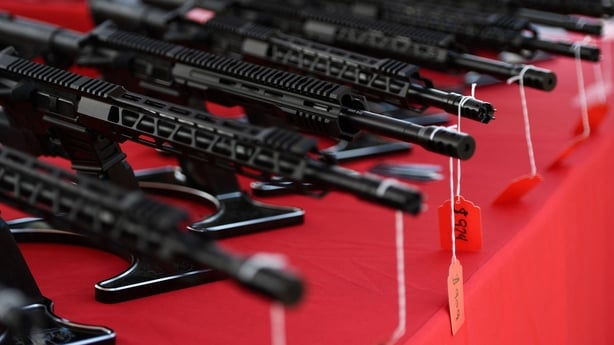
However, exceptions will be maintained for those selling private collections and family heirlooms.
The Department of Justice has said the new regulation will affect more than 23,000 unlicensed dealers and tens of thousands of gun sales every year.
Attorney General Merrick Garland said of the change in a statement: “Under this regulation, it will not matter if guns are sold on the internet, at a gun show, or at a brick-and-mortar store: if you sell guns predominantly to earn a profit, you must be licensed, and you must conduct background checks.”
Will it make any difference? Academic research on the assault rifle ban found little conclusive evidence that it had any effect on the homicide rate.
But it did slow down the spread of the most highly efficient killing machines – as the post-2004 sales figures show.
Now there are so many assault rifles in circulation – along with modification kits that can turn them into full automatics, firing at a rate of 600 rounds a minute – that it may be all but impossible to put the genie back in the bottle.
But at least closing the gun show loophole will make it harder for people who should not have guns – the mentally ill, the emotionally unstable, or outright criminals – to get guns.
Maybe the lengthy prison sentences for the Crumbleys will make parents stop and think if buying an emotionally disturbed 15-year-old a handgun is the best way to cure their depression or teenage angst.
Maybe making it easier for the cops take guns away from behaviourally challenged individuals might reduce some of the harms of the current situation, where second amendment fundamentalism seems to trump common sense.
After all, surveys indicate considerable support among law-abiding, responsible gun owners for these kinds of restrictions – because it makes gun ownership safer for them too.



